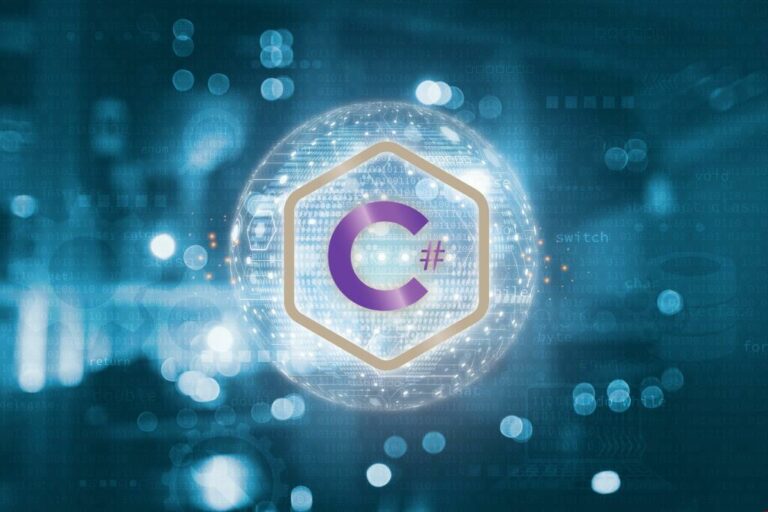What Is Blockchain Enabled Identity Management?
Content
The Association of Certified Fraud Examiners say that 83.5% of fraud cases it surveyed in 2016 featured asset misappropriation schemes including fraudulent billing and disbursements. Consider and implement independent oversight of the digital identity system. Define and continuously evaluate metrics that could blockchain identity management be used to view and understand the overall health and success of the digital identity system. This is especially important and complex in the digital world, where physical interaction with people and things, like the handbags, is replaced with digital transactions and data about goods, products, and entities.

Businesses may combine Blockpass services with their existing systems using their “Software Development Kits” . Due to the several-step process, people living in rural places may need to visit government offices many times to obtain duplicate ID evidence. Information silos and business processes are common among government agencies. We can also have DIDs that contain non-attested data from decentralized applications such as web browsing history or social media posts. Blockchain technology provides a platform for solving all of these problems. It’s believed that 1.1 billion people worldwide don’t have any legal form of identification and thus are excluded from many of the opportunities provided by modern society.
Public/private partnership actualizes digital ID
The ID2020 initiative, meanwhile, is a global partnership committed to ushering in the next era in ID management. Its alliance includes BLOK Solutions and Accenture, two startups specializing in blockchain digital identity services. Therefore, it is technically possible to record a transaction and be confident that nobody can alter or manipulate its details. Anyone can start from the “Genesis Block”, apply each block consecutively to arrive at the same result. This provides certain guarantees even when some participants are faulty or malicious.
Needless to say, organizations take the security of customer information held on file very seriously. This information can include usernames, passwords, call records, transaction and credit histories, medical information and other data unique to you. Okta plans to continue collaborating with our customers and partners in key verticals as we assess and validate transformative use cases related to identity on the blockchain. The cryptographic nature of these blocks makes it hard to alter information in the existing blocks. In essence, one could say that blockchains enable the creation of permanent data that is locked in time. Connect and protect your employees, contractors, and business partners with Identity-powered security.

Since the data is stored on several nodes, the fall of one database will not entail downtime, users will still be able to access their data. Blockchain technology solves the single point of failure problem by providing a distributed database. Storing sensitive data in one centralized location is always a risk because once fraudsters break into the system, they get everything.
Now, let’s understand how could Blockchain Identity Management work.
Puts control of your personal data back into your hands rather than being in the hands of industry giants. The ID cannot be locked into one site and there needs to be interoperability of the ID across multiple platforms, with user consent. The identity and access management market is expected to grow from $8.09 billion in 2016 to $14.82 billion by 2021, representing a 12.9% CAGR. Let’s say there’s an on-demand food delivery company that requires applicants to have a valid driver’s license.
The digital wallet allows people to access apps and services without revealing personal information. DIDs also prevent your devices from being tracked and correlated (data may be traced back to someone’s identity or online behavior). Verifiers can connect to the user’s Web3 wallet and request data while the user always chooses when to give permission to share data. Because of the problems that resulted from the centralized digital identity model, federated identity was developed. A federated identity allows authorized users to access multiple applications and domains with a single set of credentials like when people can use their Google or Facebook to sign into websites or apps. A growing number of organizations in government and in the private sector around the world are leveraging decentralized identity technology, including the EU.
- DIDs bring immediate benefits when it comes to authentication and signing into websites or applications without passwords, a process prone to security risks as well as user error (such as forgetting an ID/password combination).
- The increased speed of execution and reduction in costs with lower risk can enable businesses to drive growth by opening new revenue streams that were previously not possible.
- IBM Digital Credentials provides individuals and organizations with a secure, blockchain-based hub for DIDs.
- Zero-knowledge proofs allow for computation on sensitive data without revealing the actual values.
- Data Monetization refers to using personal data for quantifiable economic benefit.
Enhances security and privacy of medical records and intellectual property, while facilitating compliance with regulations protecting patient data. Removes the need to deal with bureaucratic processes for passport creation. They cannot borrow money, open an account, buy a house or start a business.
Checking if the site connection is secure
As the world moves more and more towards Web3, which is the next evolution of the internet, an increasing number of people will take back control of their data through decentralization and blockchain. An entity will adjust trust levels for each PoE based on previous business transactions, industry expertise, geography, political climate, and other factors. In developing and deploying blockchain for a supply chain, digital identity must be embedded into the design, to facilitate and maintain trust.
Key factors include the rising demand for digitalization and privacy-respecting identity solutions. As a result, a myriad of solutions breached the market serving this need in the form of nonfungible tokens , distributed ledger technology and barebone blockchain technology. The first risk is that the system may not be tamper-proof, meaning attackers could potentially corrupt or steal data. The second risk is that the network may become too congested to allow users to access their information reliably. And lastly, blockchain systems can be challenging to scale up if many people use them.
The identity information is not stored on the blockchain but rather on the holder’s digital wallet. The credentials issued using the Dock blockchain are stored off-chain, usually in someone’s decentralized digital wallet app. Rather cryptographic keys are used to authenticate users when they sign in. You could sign into a website with your Decentralized Identifier data instead of a user name.
With traditional paper-based IDs comes the difficulty of confirming their legitimacy across different systems. History has shown how people successfully use fake ID cards to claim unauthorized access to a myriad of benefits. However, technological advancements such as blockchain have provided authorities with the opportunity to issue verifiable certificates and IDs while ensuring scalability, speed and security of the identity management system. A digital wallet is a payment tool that stores your cryptocurrency and other digital assets. The best digital wallets use blockchain technology to allow you to manage your digital assets securely.
Individual control
All of these certificates can be issued in an immutable, trustless, private, and secure manner. Blockchains serve as the foundation of modern cryptocurrencies, but they are capable of doing much more. Here’s a peek behind the curtains at how blockchain databases work and the real-world problems they are solving. Privacy-focused cryptocurrency Monero also relies upon daemons to communicate with the network and notify wallet-holders of new transactions. Our expert, committed team put our shared beliefs into action – every day. Together, we combine innovation and collective knowledge to create the extraordinary.

In turn, DPKI is an enabler for many use cases, namely verifiable credentials . This number is expected to grow to 10 billion by 2020 and 22 billion by 2025. In a still-nascent industry, most IoT technologies do not incorporate appropriate identity and access management capabilities, not unlike the early Internet which consisted solely of trusted institutions. Interconnected internet of things devices and objects must identify sensors, monitors, and devices, and manage access to sensitive and non-sensitive data in a secure manner. Leading IT vendors have begun to offer IoT management systems to address these service gaps. For example, it is not uncommon for a single organization to have tens of thousands of IoT devices, in contrast to the mere dozens or hundreds of traditional servers and user devices.
Benefits for Organizations
This information helps establish trust and makes the user eligible to perform authentication. As well as this, global remittances could be substantially improved by using blockchain digital identities in place of the current paper-based system of money transfer. Finally, you need to work out whether you’re going to keep your data in each service provider separately or to instead store it in one place.
Limitations of blockchain-based digital IDs
Decentralization also offers another promising highlight for digital identities, especially with usage of national identifiers throughout multiple agencies. Users should be able to confirm their behavior on the internet using a single decentralized digital identity. They should also not be required to give it to every internet-based service provider. Users can keep their digital ID on a blockchain network, which can be accessed by internet-based service providers for user authentication. Blockchain can be a critical element in strengthening identity management systems to deal with existing identity issues.
As you can notice, blockchain has the potential for resolving profound issues affecting the existing state of identity management. So, let us review blockchain identity management use cases as follows to find out practical implications of blockchain for identity management. Enterprises and governments around the world recognize this fact and are working to develop blockchain-enabled digital identity platforms. Clearly we are at the base of the mountain when it comes to fulfilling the potential of not only blockchain, but also machine learning and AI in digital ID systems.
Verifiable Credential
As we saw in the previous section, blockchain has the potential to both transform and enable new use cases for identity. But, progress has been slow and measured due to a variety of reasons—technical, some legal and some likely generational issues that just need time to play out. It is worth pointing out that it took about 30 years before TCP/IP enabled businesses to fully transition to Internet driven, platform business models. Let us look at some of the issues that the industry and standards bodies are working through as they consider blockchain for identity.
In fact, many of us have scores of different digital identities stored across the web. Whenever we share personal details on a web platform, we build up digital identities. We entrust sensitive personal information such as social security numbers, driver’s license numbers, credit card numbers, and bank account information to centralized organizations over which we have zero control. The truth is that authentication and ID management are more important now than ever.
Give us the pleasure of adding our secret sauce to your app.We’ll create beautiful screens at the front while breaking the limits of what’s behind them to help your app get to beyond-plausible business achievements. Desire to build a more personalized relationship and offerings with the consumer but need to ensure the person is really who they claim they are. The World Economic https://globalcloudteam.com/ Forum is both sounding the alarm of the paradigm shift in Identity and providing the frameworks to address these challenges and opportunities. Accelerate the Know Your Customer process with client consent through attestations from network of banks. Reduce repetition in background checks & build trusted records of education and professional certificates and licenses.












